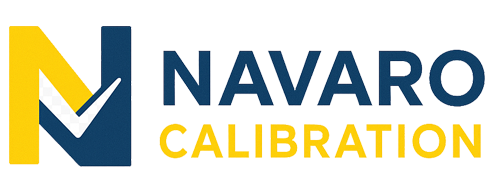No products in the cart.

In precision-driven industries such as manufacturing, aerospace, energy, and healthcare, calibration instruments play a vital role in ensuring measurements are accurate, reliable, and traceable to recognized standards. However, even the most advanced and high-quality calibration tools drift over time due to environmental factors, mechanical wear, and usage frequency. This raises a crucial question for quality managers and engineers: How often should calibration instruments be recalibrated?
In this guide, we will explore the key factors that determine recalibration intervals, industry standards you should follow, and practical tips to maintain compliance while minimizing downtime.
Why Recalibration Matters
Recalibration ensures that your instruments maintain their measurement accuracy and remain compliant with regulatory requirements such as ISO/IEC 17025. Without regular recalibration, small deviations can escalate into significant measurement errors, leading to costly rework, product recalls, or safety hazards.
For example, a Fluke 5522A Multi-Product Calibrator used in a calibration laboratory must deliver precise voltage, current, resistance, and frequency outputs. Over time, component aging can cause drift, making recalibration essential to maintain accuracy.
Factors That Affect Recalibration Frequency
There is no one-size-fits-all answer to how often calibration should be performed. The optimal recalibration interval depends on several factors:
1. Manufacturer Recommendations
Most instrument manufacturers provide suggested recalibration intervals—commonly every 12 months. However, depending on your application, you may need more frequent checks. For instance, Keysight 3458A Digital Multimeter users in high-precision labs often recalibrate every 6 months for critical measurements.
2. Industry and Regulatory Standards
Certain industries have strict recalibration schedules.
Pharmaceuticals: Often require 6- to 12-month calibration cycles for all measuring devices.
Aerospace & Defense: May mandate recalibration before critical projects.
ISO/IEC 17025 Accreditation: Requires documented intervals based on instrument performance history.
3. Instrument Usage
The more often an instrument is used—especially in harsh environments—the faster it will drift. A Fluke 754 Documenting Process Calibrator used daily in field service will need recalibration more often than a similar unit stored in a climate-controlled lab.
4. Environmental Conditions
Temperature fluctuations, humidity, dust, and vibration all impact calibration stability. Sensitive devices such as Rion NA-28 Sound Level Meters require more frequent recalibration if used outdoors or in industrial environments.
5. Historical Performance Data
Tracking calibration results over time can help determine whether an instrument’s interval should be shortened or extended. This is part of a calibration interval optimization process.
Recommended Recalibration Intervals by Instrument Type
| Instrument Type | Typical Recalibration Interval | Example Product |
|---|---|---|
| Multi-Product Calibrators | 12 months | Fluke 5522A |
| Pressure Calibrators | 12 months | Additel 681 Digital Pressure Calibrator |
| Temperature Calibrators | 12 months | Fluke 724 Temperature Calibrator |
| Digital Multimeters | 12–24 months (usage-dependent) | Keysight 3458A |
| Oscilloscopes | 12–24 months | Tektronix MDO3054 |
| Sound Level Meters | 12 months | Rion NA-28 |
Best Practices for Setting Recalibration Schedules
Follow Manufacturer Guidelines First – This is the baseline for your schedule.
Assess Your Industry Requirements – Check if there are compliance standards you must meet.
Monitor Instrument Performance – Review calibration certificates for drift trends.
Adjust Intervals Proactively – If you see signs of drift, shorten the cycle.
Use Asset Management Software – Tools like CMMS or calibration management software help track schedules and avoid missed recalibrations.
Consequences of Overdue Calibration
Non-Compliance Penalties: For ISO/IEC 17025 accredited labs, missed calibration can lead to audit failures.
Measurement Errors: Can cause product defects or safety risks.
Loss of Customer Trust: Inaccurate testing erodes credibility.
Conclusion
Regular recalibration is not just about compliance—it’s about ensuring that your measurements remain accurate, your operations stay efficient, and your equipment lasts longer. By understanding the factors influencing calibration intervals and implementing a structured schedule, you can protect both your business reputation and your bottom line.
If you’re looking for high-quality, reliable calibration instruments, explore our Calibration Instruments Category for trusted brands and models.
